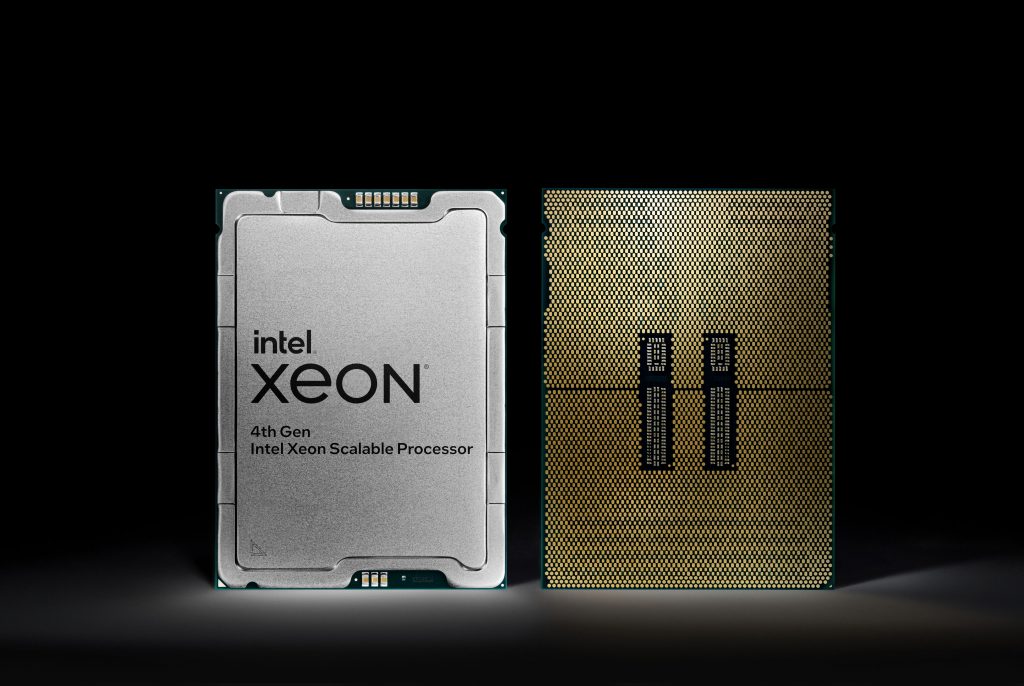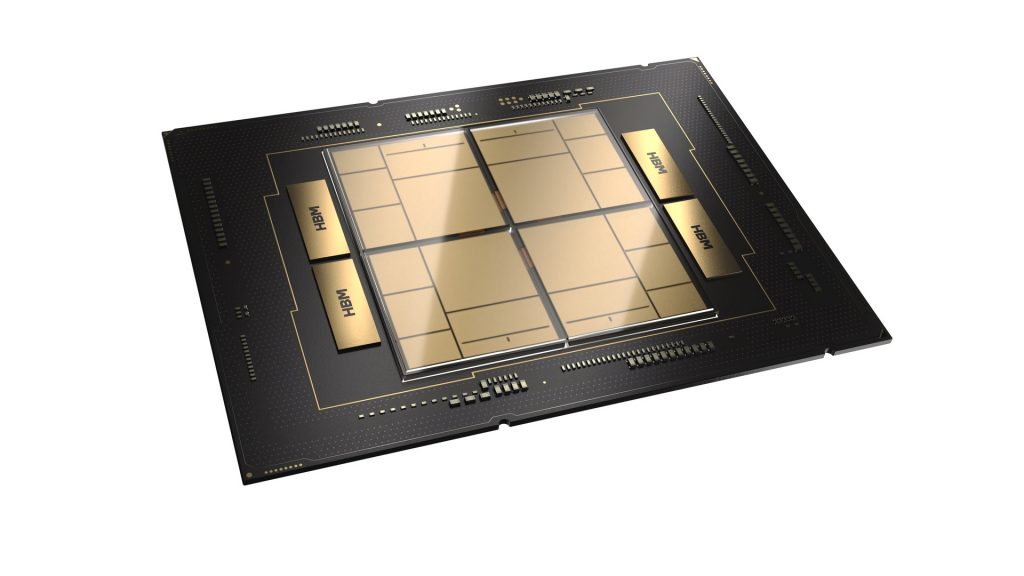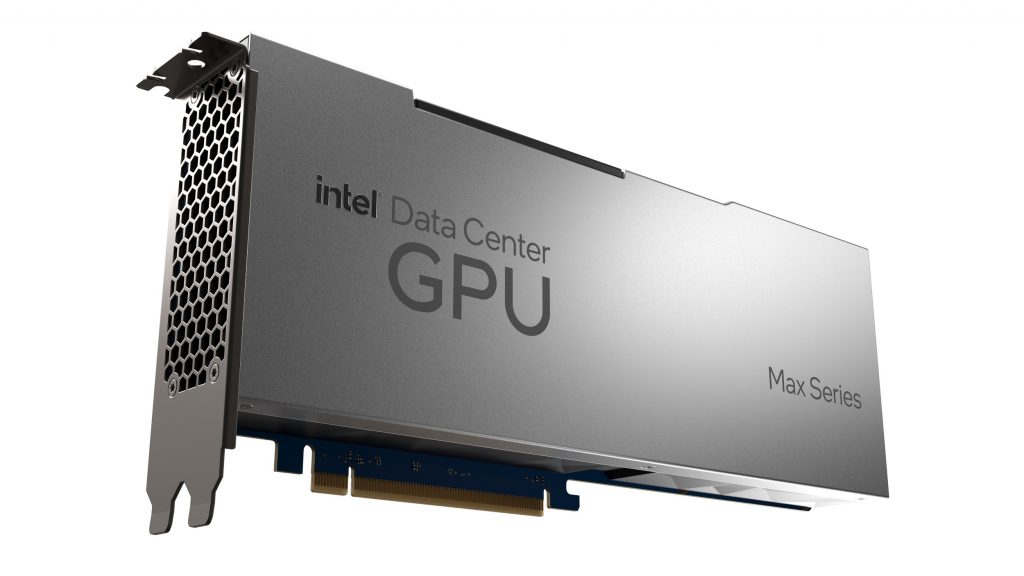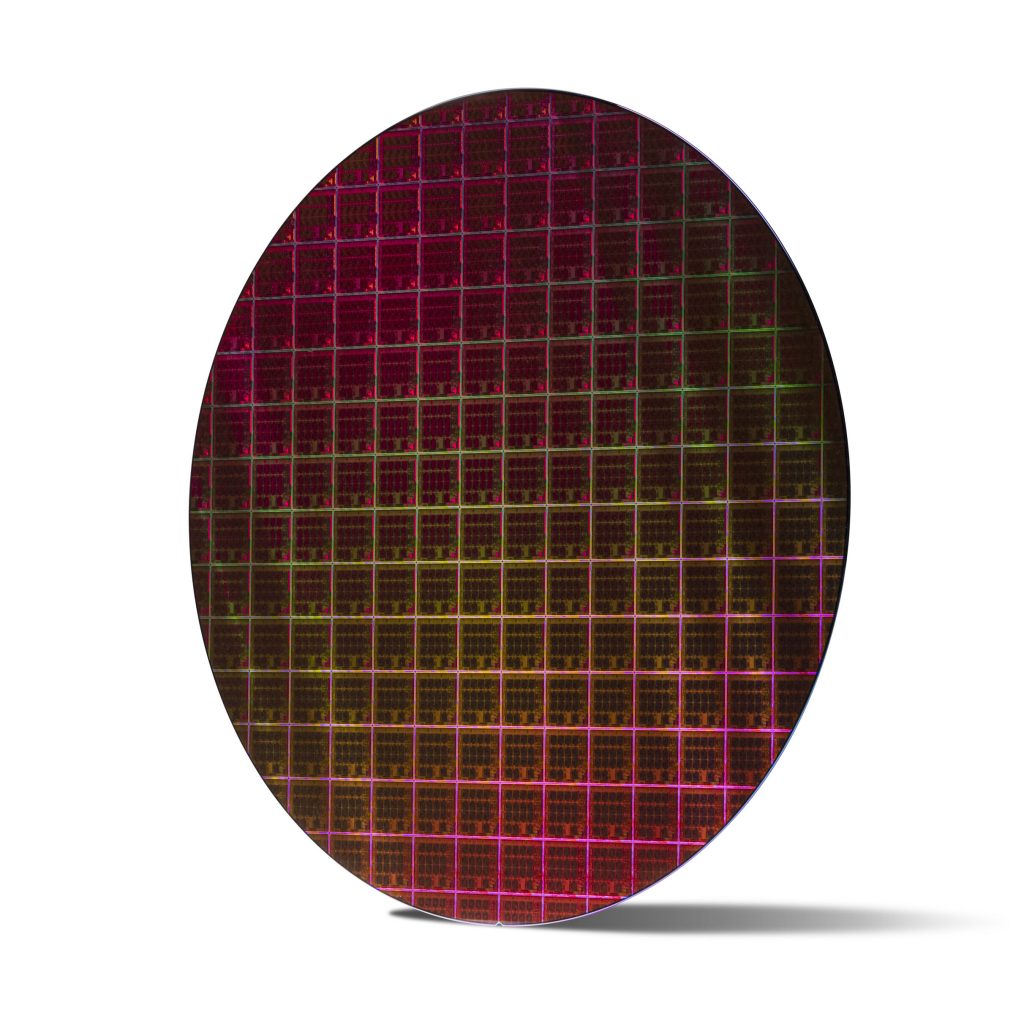26 December 2024, Thu |
7:20 PM

Intel marked one of the most important product launches in company history with the unveiling of 4th Gen Intel Xeon Scalable processors (code-named Sapphire Rapids), the Intel Xeon CPU Max Series (code-named Sapphire Rapids HBM) and the Intel Data Center GPU Max Series (code-named Ponte Vecchio), delivering for its customers a leap in data centre performance, efficiency, security and new capabilities for AI, the cloud, the network and edge, and the world’s most powerful supercomputers.
In collaboration with its customers and partners using 4th Gen Xeon, Intel is offering specialized solutions and systems on a large scale to address their most significant computing difficulties. Intel’s strategy of offering specialized, workload-first acceleration and highly optimized software tailored for particular workloads allows the company to provide the appropriate performance with the right power consumption for the best overall total cost of ownership.

In addition, Intel’s sustainable data centre processors, 4th Gen Xeon processors provide customers with a variety of features for controlling power and performance, making the optimal use of CPU resources to help gain their sustainability goal.
Sandra Rivera, Intel executive vice president and general manager of the Datacenter and AI Group said “The launch of 4th Gen Xeon Scalable processors and the Max Series product family is a pivotal moment in fueling Intel’s turnaround, reigniting our path to leadership in the data centre and growing our footprint in new arenas.”
She added “Intel’s 4th Gen Xeon and the Max Series product family deliver what customers truly want – leadership performance and reliability within a secure environment for their real-world requirements – driving faster time to value and powering their pace of innovation.”
The 4th Gen Xeon series significantly improves on Intel’s purpose-built, workload-first strategy and approach, unlike any other data centre processor currently on the market or in customers’ hands.

Over 100 million Xeons have been installed in the market; they are used in everything from on-premises servers that run IT services, such as new as-a-service business models, to networking hardware that controls Internet traffic, wireless base station computing at the edge, cloud services, and wireless networking equipment.
Building on decades of data centre, network and intelligent edge innovation and leadership, new 4th Gen Xeon processors deliver leading performance with the most built-in accelerators of any CPU in the world to tackle customers’ most important computing challenges across AI, analytics, networking, security, storage and HPC.

When comparing with prior generations, 4th Gen Intel Xeon customers can expect a 2.9×1 average performance per watt efficiency improvement for targeted workloads when utilizing built-in accelerators, up to 70-watt2 power savings per CPU in optimized power mode with minimal performance loss, and a 52% to 66% lower (TCO)3.
Because the built-in accelerators in the 4th Gen Xeon are so extensive, Intel can save power at the platform level, reducing the demand for extra discrete acceleration and assisting our customers in achieving their sustainability objectives. Additionally, for some workloads, the new Optimized Power Mode can provide up to 20% socket power savings with less than 5% performance impact11. The overall energy used by data centres is being further reduced by new developments in air and liquid cooling, while the 4th Gen Xeon was constructed using 90% or more renewable electricity at Intel sites with cutting-edge water reclamation facilities.
In AI, and compared to the previous generation, 4th Gen Xeon processors achieve up to 10×5,6 higher PyTorch real-time inference and training performance with built-in Intel Advanced Matrix Extension (Intel AMX) accelerators. Intel’s 4th Gen Xeon unlocks new levels of performance for inference and training across a wide breadth of AI workloads.

The Xeon CPU Max Series enhances the capabilities for natural language processing, allowing customers to experience a significant increase in speed of up to 20×12 on large language models. Intel’s AI software suite provides developers with the flexibility to use their preferred AI tools while also increasing efficiency and speeding up the AI development process. This suite is flexible, it can be used on a workstation and scaled to the cloud or edge, and it has been tested with more than 400 machine learning and deep learning AI models across various business segments and common AI use cases.
4th Gen Xeon offers a family of processors specifically optimized for high-performance, low-latency networks and edge workloads. These processors are a critical part of the foundation driving a more software-defined future for industries ranging from telecommunications and retail to manufacturing and smart cities. For 5G core workloads, built-in accelerators help increase throughput and decrease latency, while advances in power management enhance both the responsiveness and the efficiency of the platform. And, when compared to previous generations, the 4th Gen Xeon delivers up to twice the virtualized radio access network (vRAN) capacity without increasing power consumption. This enables communications service providers to double the performance-per-watt to meet their critical performance, scaling and energy efficiency needs.
4th Gen Xeon and the Intel Max Series product family bring a scalable, balanced architecture that integrates CPU and GPU with one APIs open software ecosystem for demanding computing workloads in HPC and AI, solving the world’s most challenging problems.

The Xeon CPU Max Series is the first and only x86-based processor with high bandwidth memory, enabling it to accelerate numerous HPC tasks without requiring code modifications. The highest-density Intel CPU, the Data Center GPU Max Series, will be offered in a variety of form factors to suit various customer requirements.
The Xeon CPU Max Series offers 64 gigabytes of high bandwidth memory (HBM2e) on the package, significantly increasing data throughput for HPC and AI workloads. Compared with top-end 3rd Gen Intel Xeon Scalable processors, the Xeon CPU Max Series provides up to 3.7 times10 more performance on a range of real-world applications like energy and earth systems modelling.
The Data Center GPU Max Series compacts over 100 billion transistors into a 47-tile package, providing high levels of throughput for demanding workloads such as physics, finance, and life sciences. When used together with the Xeon CPU Max Series, the combined platform can achieve up to 12.8 times more performance compared to the previous generation when running the LAMMPS molecular dynamics simulator.
Signifying the biggest platform transformation Intel has delivered, not only is 4th Gen Xeon a marvel of acceleration, but it is also an achievement in manufacturing, combining up to four Intel 7-built tiles on a single package, connected using Intel EMIB (embedded multi-die interconnect bridge) packaging technology and delivering new features including increased memory bandwidth with DDR5, increased I/O bandwidth with PCIe5.0 and Compute Express Link (CXL) 1.1 interconnect.
Security is the cornerstone of it all. Data security, regulatory compliance, and data sovereignty are all improved by Intel’s 4th Gen Xeon, which offers the most comprehensive confidential computing portfolio of any data centre silicon provider in the market. With Intel Software Guard Extensions (Intel SGX), which offers today’s smallest attack surface for confidential computing in private, public, and cloud-to-edge contexts, Intel continues to be the only silicon provider to offer application isolation for data centre computing. Additionally, Microsoft Azure, Alibaba Cloud, Google Cloud, and IBM Cloud will introduce Intel’s new virtual-machine (VM) isolation technology, Intel Trust Domain Extensions (Intel TDX), which is perfect for converting current workloads into a secure environment.
Finally, the modular architecture of 4th Gen Xeon allows Intel to offer a wide range of processors across nearly 50 targeted SKUs for customer use cases or applications, from mainstream general-purpose SKUs to purpose-built SKUs for cloud, database and analytics, networking, storage, and single-socket edge use cases. The 4th Gen Xeon processor family is On Demand-capable and varies in core count, frequency, a mix of accelerators, power envelope and memory throughput as is appropriate for target use cases and form factors addressing customers’ real-world requirements.